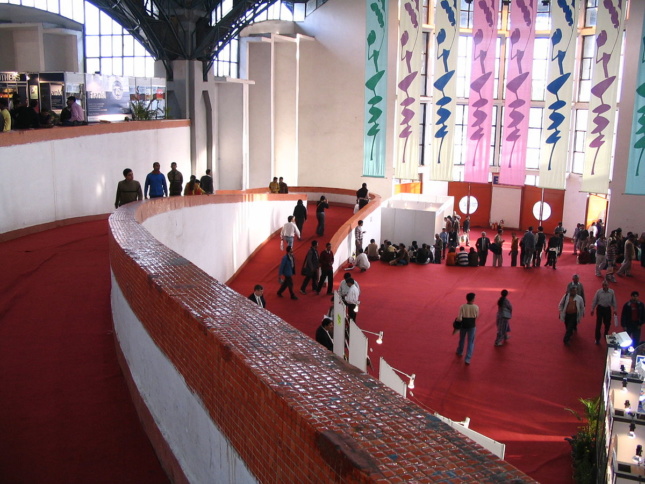On August 15, 1947, India became an independent state, free from Britain’s colonial rule. In 1972, to mark the 25th anniversary of this momentous occasion, Prime Minister Indira Gandhi unveiled the Hall of Nations, designed by Indian architect Raj Rewal. A further twenty years on, however, the landmark building which once occupied the Pragati Maidan site has been demolished.
Officially known as the Hall of Nations and Industries, the building was made from concrete cast in-situ and used a tesselating triangular structure to form a capped pyramid. It echoed the modernist manifestations of Chandigarh—a master planning project from Westerners Le Corbusier, Jane Drew, and Maxwell Fry. In 2016, Corbusier’s Chandigarh Capitol Complex was listed by UNESCO as a World Heritage Site.

Speaking to the Quint, Rewal, an architect who studied in Delhi, said his work was “symbolic of an achievement by young architects in a newly-independent India, creating a style which could be constructed with limited means, yet be uniquely Indian.” Rewal is a revered figure in India. In 1989, he was awarded the Gold Medal by the Indian Institute of Architects and his Hall of Nations building is considered to be his magnum opus.
However, the Heritage Conservation Committee (HCC) maintained its ruling that only buildings older than 60 years can be considered for heritage status. These guidelines came into place just this February and the committee argued that because of this, Rewal had no legal right to preserve the building.

Subsequently, the India Trade Promotion Organization (ITPO) decided the flatten the building and its neighboring Nehru Pavilion. As of yesterday, Rewal’s work is now rubble. Attempts were made to save it, even in New York. Martino Stierli, The Philip Johnson Chief Curator of Architecture and Design at the Museum of Modern Art, said:
The Hall of Nations and the Nehru Pavilion are outstanding representatives of Indi’s post-independence architectural heritage and for this reason must be preserved. The Museum of Modern Art is fully committed to helping in any way we can to ensure the preservation of these important monuments of modern architectural culture.
Meanwhile, an IPTO official told the New Indian Express: “the buildings were not categorized as heritage by the Heritage Conservation of Committee (HCC) as those are only 45-years-old. So, we have demolished those for the new project. Demolition of the Nehru Pavilion is still going on.”

Why does a trade promotion organization have agency in demolishing a building, you wonder? IPTO, it turns out, is backed by India’s ministry of commerce and industry and is charged with promoting global trade. International expos and trade fairs used to be held at the Hall of Nations. Now IPTO has deemed the building surplus to requirements as it seeks a new venue, due to come in the shape of the Integrated Exhibition-cum-Convention Centre (IECC). You can view those plans here.
“The layout plan of IECC, which inevitably involves demolition of these structures, has already been approved by statutory authorities concerned, like the Delhi Urban Arts Commission, the South Delhi Municipal Corporation, and the National Monuments Authority,” the IPTO official added.
To find out more about the Hall of Nations, watch a short documentary on the building below:











